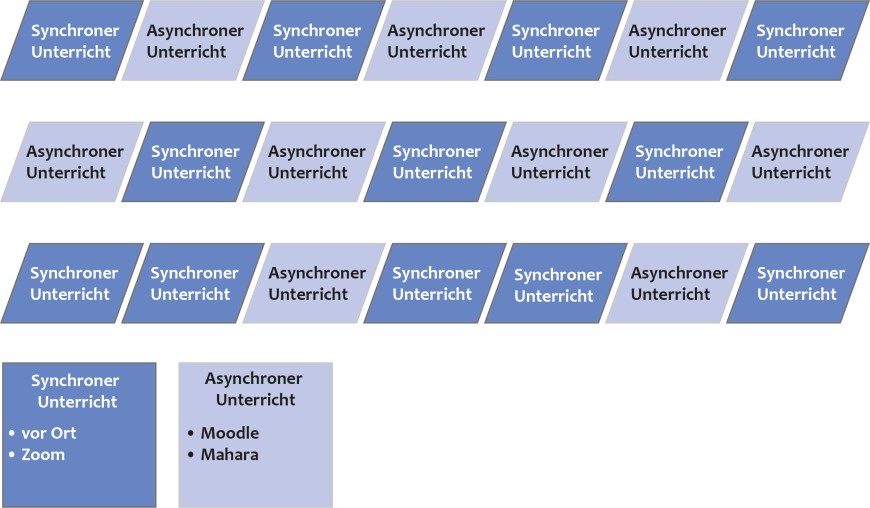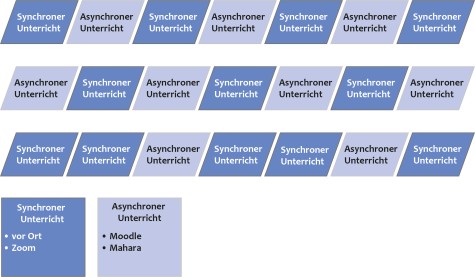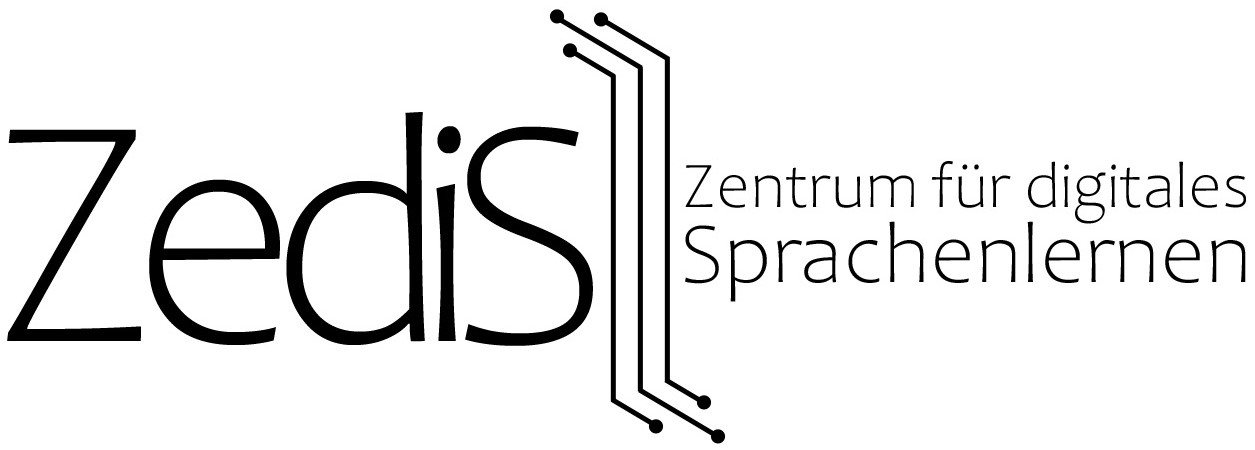The term blended learning refers to a combination of online and face-to-face teaching with alternating or mixed phases. The synchronous part of the teaching can take place online via a web conferencing tool, but also on site at the university, while the asynchronous part takes place online with the help of learning platforms. At the TU Darmstadt, the learning platforms Moodle or Mahara can be used for the asynchronous phases. On these platforms, teachers create documents/assignments and make these available to learners. These tasks can then be worked on in individual, partner or group work, depending on the social form. The goal of the asynchronous phases is for learners to receive the documents (distribution), get in touch with others, e.g. via forum (interaction), and exchange information about them (collaboration) (cf. Möslein-Tröppner & Bernhard 2021:135).
Depending on the respective blended learning concept, teaching can begin with a general acquaintance, followed by a discussion of the course schedule of face-to-face instruction. Alternatively, it can start asynchronously, where learners familiarize themselves with the topics on their own and can then engage in possible discussions during the first synchronous meeting.


Literature:
Möslein-Tröppner, Bodo; Bernhard, Willi (2021): Digital Learning. Was es ist und wie es praktisch gestaltet werden kann. Wiesbaden: Springer Gabler.

